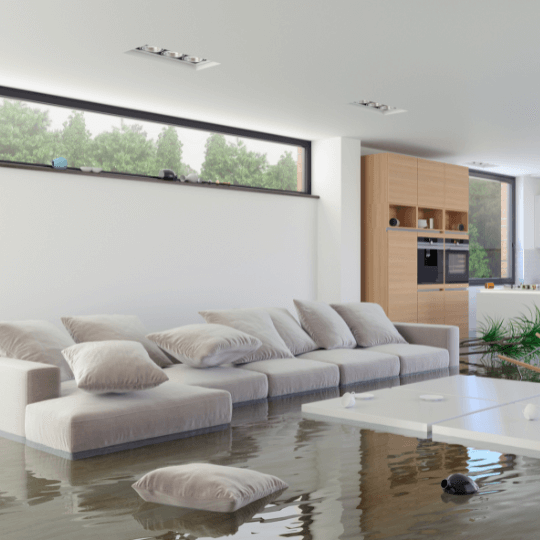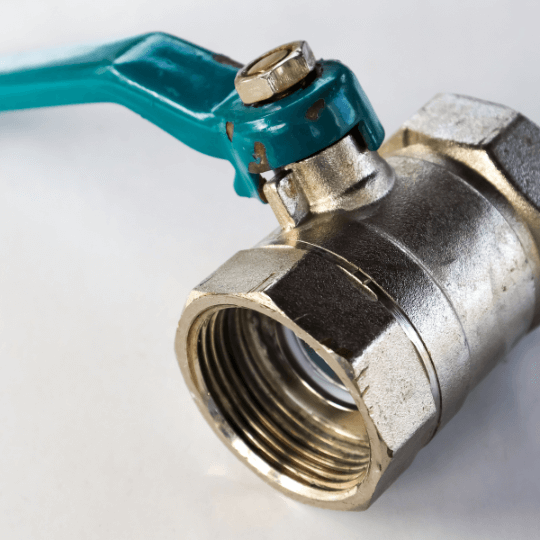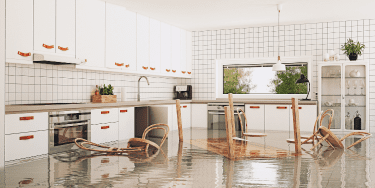Experiencing a house flood is among the most stressful situations a homeowner can face, posing threats to your property and safety. This post provides the essential steps you should take in the event of a flood, crafted especially for homeowners, water damage relief services, and anyone interested in disaster preparedness. Our goal is to guide you through this challenging time with a clear, actionable checklist.
Prioritize Your Safety During A House Flood
Before assessing the damage, ensure it’s safe to enter your home. Look for signs of structural damage, like cracks or collapses, that might make your home unsafe. Remember, possessions can be replaced, but your life cannot.
Contacting Your Insurance Provider Immediately
Reach out to your insurance company as quickly as possible to start your claim process. They can provide valuable advice on the immediate steps to take and the types of documentation needed.

Deal With Utility Issues
If possible, turn off all power from the main switch without stepping in water to prevent electrocution. However, if gas leaks or concerns exist, shut off your gas line immediately. In both scenarios, avoid attempting to fix these issues yourself, as they could pose serious risks. Instead, contact professionals right away. They’re well-equipped and trained to handle such situations safely and efficiently, ensuring your home is secure before the cleanup process begins.
Locate the Source of the Flood
In case of flooding caused by internal issues, such as a burst pipe, it’s important to stop the water flow immediately, provided it’s safe to do so. This can prevent further damage to your property. Knowing the location of your main water shut-off valve ahead of time is crucial in these situations. Having this knowledge allows you to act swiftly, minimizing the impact of the water damage. After you’ve stopped the water flow, call a professional plumber to assess and repair the issue, ensuring it doesn’t recur.
Document the Damage
Before starting the cleanup process after a flood, it’s crucial to thoroughly document the damage. This involves taking extensive photos and videos of all affected areas and items. These visual records serve as vital evidence when filing insurance claims, helping to depict the extent of the damage accurately. They also provide a clear picture of the situation for your insurance company, making it easier for you to receive the appropriate compensation for your losses. Always remember that the more detailed your documentation, the stronger your claim will be.
Start Cleanup Efforts
Starting the cleanup process after a flood can feel overwhelming, but it’s important to begin by removing water-damaged items as soon as they are safe to enter your home. This includes furniture, rugs, and personal items that have been soaked and may harbor mold. Be sure to wear protective clothing during this process to avoid contact with potential toxins. Professional water extraction services may be necessary when there’s significant standing water. These experts have specialized equipment to effectively and safely remove large amounts of water, mitigating further damage to your property and setting the stage for drying and restoration.

Dry Everything Out
Prompt drying is crucial after a flood. Open windows, use dehumidifiers and fans to circulate air and help dry things out. This will help prevent mold growth, which can begin in damp conditions within 24 to 48 hours. It’s also important to remove wet materials like rugs or furniture as they can harbor mold. If the damage is extensive, consider hiring a professional water damage restoration company to ensure a thorough drying process.
Look Out for Mold
Mold is a common issue after flood damage, thriving in damp environments.
It can cause various health problems, especially for those sensitive to it, including stuffy nose, wheezing, and itchy eyes or skin.
Stay vigilant for signs of mold, such as discoloration, fuzziness, or a musty smell.
In severe cases, professional mold remediation services may be required to ensure your home is safe and healthy.
Evaluate Electrical Systems and Appliances
After a flood, it’s crucial to have a qualified electrician inspect your electrical system before turning the power back on. Flood-damaged appliances might also require professional inspections before use. This can ensure safety and compliance with electrical codes. An electrical inspection typically costs $100 to $200, varying based on your home’s size and age.
Consider Temporary Housing Options
If your home is severely damaged, finding temporary housing may be safer and more comfortable. This gives professionals the space they need to conduct restoration efforts effectively. Temporary housing options could include:
- Staying with friends or family.
- Renting a short-term property.
- Utilizing a hotel.
Some insurance policies may cover these costs, so it’s worth checking your coverage.
Seek Additional Financial Assistance
If your insurance doesn’t fully cover the costs of flood damage, consider exploring government disaster relief programs, like FEMA or the Red Cross. These can provide financial assistance for repairs and rebuilding. Additionally, local community organizations often offer support in such situations, providing resources and aid to help homeowners recover from the aftermath of a flood.
Implement Long-Term Flood Prevention Strategies
Once you’ve overcome the immediate crisis, consider investing in flood protection for your home to mitigate future risks. Here are some measures you can consider:

- Install Flood Barriers: These can include sandbags, flood doors, or portable barriers that can be set up when flooding is forecasted.
- Elevate Electrical Outlets and Appliances: This can help prevent water damage to your electrical system and appliances during a flood.
- Landscaping: Use strategic landscaping to redirect water flow away from your home. This could include installing a rain garden or adjusting the slope of your yard.
- Waterproof Your Basement: Consider adding a waterproof sealant to your basement walls and floors and possibly installing a sump pump for extra protection.
- Install Backflow Valves: These can prevent sewer lines from backing up into your home during heavy rainfall.
- Elevate Furniture: If possible, elevate furniture and valuables on higher floors or use cinder blocks or pallets to lift them off the ground.
- Purchase Flood Insurance: Even with all these precautions, it’s still wise to have flood insurance as a safety net in case of severe flooding.
Seek Professional Help for Restoration and Repairs
Blackhill Restoration is a highly-rated company that offers around-the-clock water damage restoration, fire damage repair, and mold removal services. With our trained and certified crews, they’re equipped to respond promptly and reliably to emergencies. We offer a full range of services, including water extraction, flood cleanup, and damage repair. By engaging experts like Blackhill Restoration, you can be assured of comprehensive cleaning, drying, and repairing post-flood, minimizing the impact on your home.
Final Thoughts
Overwhelming as a flooded home can be, acting promptly and methodically can salvage much of your property and potentially reduce the risks of long-term damage. Keep this checklist handy, and remember that preparation paired with practical action is your best defense against the upheavals of home flooding.
Don’t let the aftermath of a flood define your future. Take the necessary steps towards recovery today by consulting with professionals like Black Hill Restoration. Ensure the safety and longevity of your home—reach out for an assessment and embark on the path to restoration with confidence. Act now; your peace of mind is just a call away.

